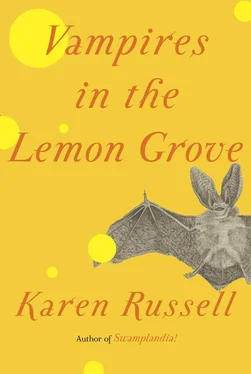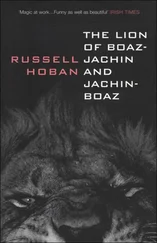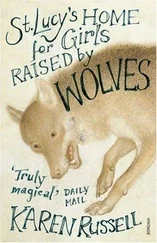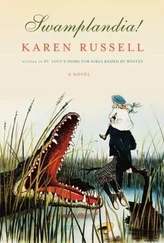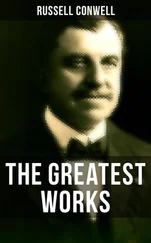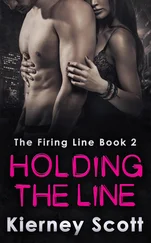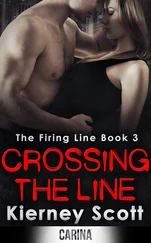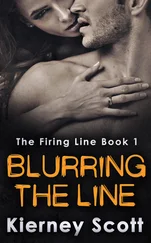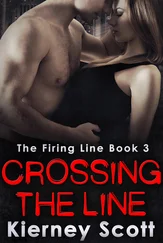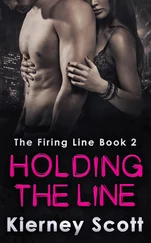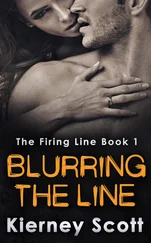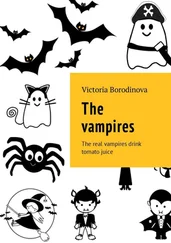“What do you like the most about your job?”
“Oh, that’s an easy one!” Beverly summons a smile for the girl. “Helping.”
Most days, she doubts she helped the sergeant at all. She thinks it’s far more likely that she aggravated his condition, or postponed a breakdown. But a picture comes to her of Zeiger walking down the street into vivid light, the tattoo moving with his muscles. She wants to believe that this is possible — that he lifted the gauze to find the welts healed and the tattoo settling into a new shape. Not even in her fantasy can she guess what it might look like. In her wildest imaginings, Zeiger finds both things — a story he can carry, and a true one.
The Graveless Doll of Eric Mutis

The scarecrow that we found lashed to the pin oak in Friendship Park, New Jersey, was thousands of miles away from the yellow atolls of corn where you might expect to find a farmer’s doll. Scarecrow country was the actual country , everybody knew that. Scarecrows belonged to country men and women. They lived in hick states, the I states, exotic to us: Iowa, Indiana. Scarecrows made fools of the birds and smiled with lifeless humor. Their smiles were fakes, threads. (This idea appealed to me — I was a quiet kid myself, branded “mean,” and I liked the idea of a mouth that nobody expected anything from, a mouth that was just red sewing.) Scarecrows got planted into the same soil as their crops; they worked around the clock, like charms, to keep the hungry birds at bay. That was my impression from TV movies, at least: horror-struck, the birds turned shrieking circles around the far-below peak of the scarecrow’s hat, afraid to land. They haloed him. Underneath a hundred starving crows, the TV scarecrow seemed pretty sanguine, grinning his tickled, brainwashed grin at the camera. He was a sort of pitiable character, I thought, a jester in the corn, imitating the farmer — the real king. All day and all night, the scarecrow had to stand watch over his quilty hills of wheat and flax, of rye and barley and three other brown grains that I could never remember (my picture of scarecrow country was ripped directly from the 7-Grain Quilty Hills Muffins bag — at school I cheated shamelessly, and I guess my imagination must have been a plagiarist, too, copying its homework).
A scarecrow did not belong in our city of Anthem, New Jersey. Anthem had no crops, no silos, no crows — it had turquoise Port-o-Pottys and neon alleys, construction pits, dogs in purses, homeless women with powerful smells and opinions, garbage dumps haunted by white pigeons; it had our school, the facade of which was covered by a glorious psychedelic phallus mosaic, a bunch of spray-painted dicks. Cops leaned against the cement walls, not straw guards.
We were city boys. We lived in these truly shitbox apartments. Our familiarity with the figure of the scarecrow came exclusively from watered-down L. Frank Baum cartoons, and from the corny yet frightening “Autumn’s Bounty!” display in the Food Lion grocery store, where every year a scarecrow got propped a little awkwardly between a pilgrim, a cornucopia, and a scrotally wrinkled turkey. The Food Lion scarecrow looked like a broom in a Bermuda shirt, ogling the ladies’ butts as they bent to buy their diet yogurts. What we found in Friendship Park in no way resembled that one. At first I was sure the thing tied to the oak was dead, or alive. Real, I mean.
“Hey, you guys.” I swallowed. “Look—” And I pointed to the pin oak, where a boy our age was belted to the trunk. Somebody in blue jeans and a striped sweater that had faded to the same earthworm color as his hair, a white boy, doubled over the rope. Gus got to the kid first.
“You retards.” His voice was high with relief. “It’s just a doll. It’s got straw inside it.”
“It’s a scarecrow !” shrieked Mondo. And he kicked at a glistening bulb of what did appear to be straw beneath the doll’s slumping face. A little hill. The scarecrow regarded its innards expressionlessly, its glass eyes twinkling. Mondo shrieked again.
I followed the scarecrow’s gaze down to its lost straw. Long strands were blowing loose, like cut hair on a barbershop floor. Chlorophyll greens and yellows. Some of the straw had a jellied black look. How long had this stuff been outside him, I wondered — how long had it been inside him? I scanned his sweater for a rip, a cold, eel-like feeling thrashing in my own belly. That same morning, while eating my Popple breakfast tart, I’d seen a news shot of a foreign soldier watching blood spill from his head with an expression of extraordinary tranquillity. Calm came pouring over him, at pace with the blood. In the next room, I could hear my ma getting ready for work, singing an old pop song, rattling hangers. On TV, one of the soldier’s eyes fluttered and shut. Then, without warning, the story changed, and the footage sprang away to the trees of a new country under an ammonia-blue sky. I’d sat there with jam leaking into my mouth, feeling suddenly unable to swallow — where was the cameraman or the camerawoman? Who was letting the soldier’s face dissolve into that calm?
“Let’s cut it down!” screamed Mondo. I nodded.
“Nah, we better not,” Juan Carlos said. He looked around the woods sharply, as if there might be a sniper hidden in the oaks. “What if this”—he pushed at the doll—“belongs to somebody? What if somebody is watching us, right now? Laughing at us …”
It was late September, a cool red season. I wondered who had chosen to bind the scarecrow to this particular tree — our tree, the one that belonged to our gang, Camp Dark. It was the tallest tree in Friendship Park, a sixty-foot oak overlooking a deep ravine, which we called “the Cone.” Erosion had split the limestone bedrock, creating a fifteen-foot drop to an opening that looked like the sandy bottom of a well; it couldn’t have been more than seven feet across at its widest point. The rock walls were smooth. It didn’t seem like you could get to the bottom safely without a parachute. Mondo was always trying to persuade us to throw a mattress down there, and jump. The Cone had become an open casket of our trash. Way down at the bottom you could see wet blue dirt with radishy pink streaks along it, as exotic looking to us as a seafloor. Condoms and needles (not ours) and the silver shreds of Dodo Potato Chips bags and beer bottles (mostly ours) seemed to grow among the weeds. The great oak leaned its shadow into the Cone like a girl playing at suicide, quailing its many fiery leaves.
We’d been meeting under this oak for four years, ever since we were ten years old. Back then we played actual games. We hid and we sought. We did benign stuff in trees. We amassed a plastic weapons cache in the hollow of the oak that included the Sounds of Warfare Blazer, a toy gun that required sixteen triple-A batteries to make a noise like a tubercular guinea pig. Those were innocent times. Then we’d gotten shunted into Anthem’s upper grades, and now as freshmen we came here to drink beers and antagonize one another. Biweekly we shoplifted liquor and snacks, in a surprisingly orderly way, rotating this duty. “We are Communists!” shrieked Mondo once, pumping a fistful of red-hot peanuts into the sky, and Juan Carlos, who did homework, snorted, “You are quite confused, my bro.”
Friendship Park was Anthem’s last green space, sixty acres of woods bordered by gas and fire stations and a condemned pizza buffet. THE PIZZA PARTY IS CANCELED read a sign above a bulldozer. The central acres of Friendship Park were filled with pines and spruce and squirrels that chittered some charming bullshit at you, up on their hind legs begging for a handout. They lived in the trash cans and had the wide-eyed, innocent look and threadbare fur of child junkies. Had they wised up, our squirrels might have mugged us and used our wallets to buy train tickets to the national park an hour north of Anthem’s depressed downtown. Only Juan Carlos had seen those real woods. (“There was a river with a purple fish shitting in it” was all we got out of him.)
Читать дальше
